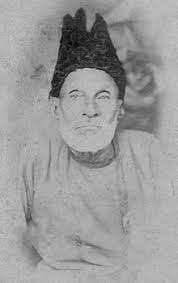METCALF HALL & OLD CURRENCY BUILDING
Metcalf Hall
Metcalfe Hall
is a heritage building situated at the junction of Strand Road and Hare Street
The architecture is reflective of the British imperial architecture at the
middle of the nineteenth century, and visually similar to ancient Greek
temples. The building is raised on a solid basement and thirty huge Corinthian
pillars support a massive entablature. The columns and colonnade surround the
whole building.
It
was built between 1840-1844 according to the design prepared by the city
magistrate, C.K. Robinson and named after Sir Charles T. Metcalfe, the
Governor-General of India, in honour of his efforts towards a free press. The
building faces the Hooghly river on the West.
Initially, the building housed the Calcutta Public Library collection, formed by Lord Metcalf, then the Governor General, who transferred 4,675 volumes from the library of the College of Fort William. These volumes and donations of books from individuals formed the nucleus of the library, which was created under private auspices. Dwarkanath Tagore was the first proprietor of Calcutta Public Library.
A majestic white building (150-year-old) overlooking
Dalhousie Square is the Old Currency Building. All three floors of the western
wing — facing Esplanade station of the East-West Metro — houses the permanent
exhibition “Ghare Baire | The World, The Home and Beyond: 18th-20th Century Art
in Bengal”. Conservation and restoration work has been carried out in the
building to turn it into a hub for exhibitions. The building was “founded in
1833” and first housed Agra Bank. The building got its present name when “the
government occupied a large portion of it for its Currency Department in 1886
from the Agra Bank Limited”. Currency Building had been in use till 1994. The
central public works department (CPWD), which was in charge of the building,
started demolishing the structure in 1996. In the book White and Black,
Soumitra Das writes that the destruction was stopped after the Calcutta
Municipal Corporation (CMC) and Intach (Indian National Trust for Art and
Cultural Heritage) intervened. The ASI was given custody of the building in
2005. But the three massive central domes had been pulled down by then. This is
a handsome three storied building, designed in Italian style; the walls were
made of brick. The roof was arched on iron joist and the floor covered with
marble and chunar sandstone. A handsome gate at the entrance in three parts is
of a very florid design in wrought iron. The Central Hall gets sunlight through
skylights overtopping the large domes. The Currency office has a vault of a
massive masonry lime on its roof, walls and floor.
The second floor is similarly designed and the then
Assistant Commissioner in-charge of the Currency Building had his residence
there. The rooms above are spacious and are paved with Italian marbles. The
present exhibition is commissioned by the Ministry of Culture, Government of
India, and curated and organised by DAG, in collaboration with NGMA, this
museum-exhibition is the first comprehensive showcasing of the art and artists
of Bengal.
Inaugurated by Prime Minister Shri Narendra Modi on 11th
January 2020, Ghare Baire provides a glimpse of the richness, diversity and
depth of Bengal’s art over the centuries. The exhibition is sectioned into 12
broad categories, showcasing over 600 artworks of which the majority are from
the DAG collection and 19 important works from the National Gallery of Modern
Art, Delhi.
DAG has done seminal work in gaining recognition for
India’s modern masters whose legacies had been lost to time and apathy in the
absence of sufficient viewers, collectors, promoters, curators or scholars. The
gallery’s focus has always been research-led. It has documented the works of the
finest twentieth century artists, lifting them out of recent oblivion to get
them their due appreciation while aligning them with various art movements
across the country. Ranging all the way from pre-modern art to modern art
practices and tracking the changes in response to constant innovation and
experimentation, DAG’s long-term perspective has been at the forefront of most
of its activities. This includes its historical curatorial exercises, its
publishing and filmmaking programmes, its art appreciation workshops and
education initiatives, interfaces with the financial and corporate sectors by
way of talks and curated walks, relationship building with institutions and
museums around the world, participation in international art fairs, or creating
tactile aids for the specially-abled. DAG’s galleries in New Delhi, Mumbai and
New York are at the forefront of this movement and have provided a destination
for those wanting to discover the enduring pull of Indian modern art.
Date of visit: March 2020





















Comments
Post a Comment